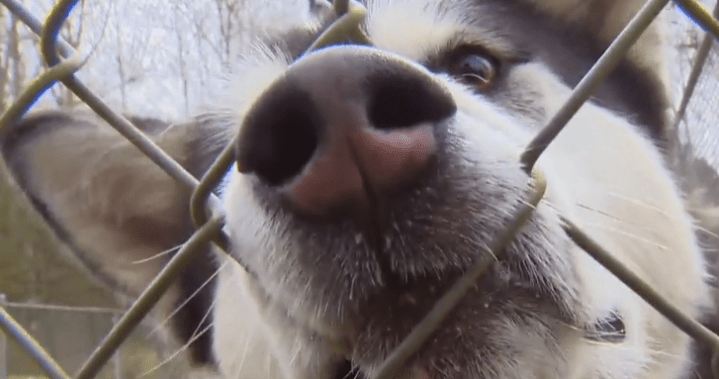Instructions:
Want to discuss? Please read our Commenting Policy first.
If you get Global News from Instagram or Facebook – that will be changing. Find out how you can still connect with us.
A cull of dogs at an isolated Manitoba reserve — provoked by an incident earlier this month in which a 10-year-old girl was bitten — is raising red flags among animal advocates.
Officers at the Pukatawagan RCMP detachment were notified of the biting incident Oct. 6, RCMP say, and the dog was identified, captured, and was being monitored due to concerns about rabies.
Police said, however, they weren’t consulted about the cull — something they say was a decision made by Mathias Colomb Cree Nation officials — and were only alerted to it by a concerned animal rescue.
Mathias Colomb resident Jumpsey Mercer told Global Winnipeg she’s been working in her spare time to help the community’s dogs, but it’s an uphill battle.
“It’s an isolated reserve, and we have a big issue with the dogs — a very big issue,” Mercer said.
“It doesn’t seem like there’s a lot of help out there… there’s just not enough supplies to go around. I guess that (the dogs) are cute and cuddly when they’re first born, but after the fact, nobody wants them.”
Mercer said there seems to be a number of pet owners in the community who don’t take the initiative to properly feed and care for their animals, leading to large numbers of hungry dogs in the area. Despite efforts to solicit community members for donations for food and supplies, she said it’s been difficult to find support.
“You see them trying to get something to eat, or you see them eating Pampers or garbage. There’s even ‘garbage dogs’, if you might say. They walk to the dump every day and go and eat… and there’s a couple of wild dogs that live in the bush. And it’s sad.”
Around her own neighbourhood, Mercer said, there are at least 15-20 dogs looking for food, and while there are few other options presenting themselves, she doesn’t see killing the animals as a viable or humane way to deal with the problem.
“It’s not right. Not right for anybody to be harmed like that… to get rid of (them) like that. They have a meaning, you know? To have a life just as we do.”
Winnipeg Humane Society CEO Jessica Miller said animal overpopulation is a concern provincewide, and isn’t isolated to one specific Manitoba community.
“Animal overpopulation in Manitoba is at an extreme level,” Miller told Global Winnipeg.
“Any community above the 53rd parallel has very little access and reach to veterinary care, and so overpopulation in northern remote communities is at its highest.
“We were making some headway just before COVID, (but) COVID really put everyone back because they weren’t able to go into community and assist in the ways that chief and council, community members were looking for. And that’s been leading to a lot of dog culls.”
Miller said her organization has an outreach program that works with remote communities to fly in and provide some access to veterinary care — but there’s not enough funding to make the type of needed impact, and humane society staff are also bust dealing with around 10,000 animals a year in Winnipeg.
Earlier this year, the province pledged $200,000 in funding toward a remote veterinary care initiative, after 45 different animal welfare organizations said population levels were at a crisis point and declared a state of emergency.
The Winnipeg Humane Society, however, along with other rescue groups, is calling for a much higher dollar amount to make a real impact on the ongoing problem.
“Ideally, we’d be getting more funding, we’d be doubling and tripling our teams and spreading out into northern Manitoba to try to provide some access to spay and neuter, maybe some access to implants that would sterilize animals for up to two years,” she said.
“That’s another way to quickly manage the problem, instead of continuing to try to bring so much staff and equipment up north when it’s so costly.”
The clinics they hold in northern communities — which could include spay or neuter surgery, vaccines and grooming, as well as advice and education — realistically only help between 30-70 animals, which Miller says is the ‘tip of the iceberg’.
“It’s really dangerous to have free-roaming dogs in large numbers packing in northern communities. Sometimes food is scarce. If they are not staying neutered, they have more tendency to roam.
“They are going to the schools looking for food. They are going to people looking for food. It always ends up leading to a cull and/or a mauling. So it’s dangerous for both the people in the communities and the animals in the community.”
The email you need for the day’s top news stories from Canada and around the world.
The email you need for the day’s top news stories from Canada and around the world.

